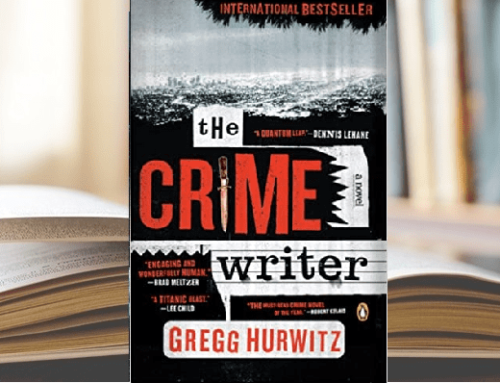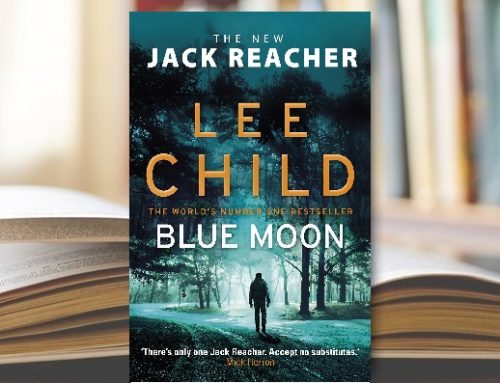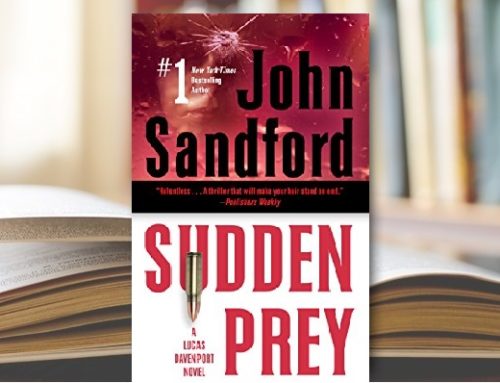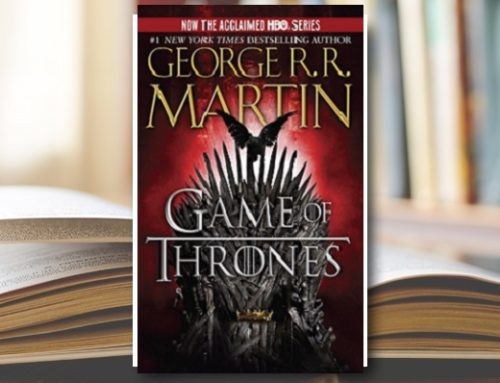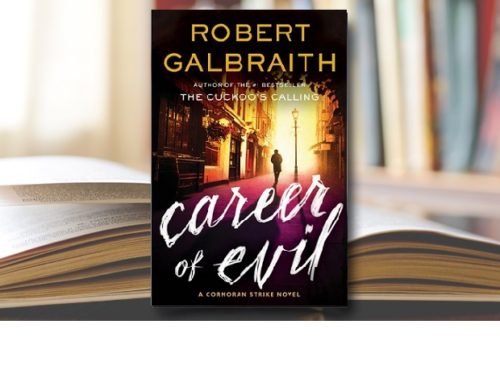[by Ross Browne]
Up until last week, one notable blind spot in my reading life was Ian Fleming’s James Bond series. I loved the movies of the Sean Connery and Roger Moore era but, unimpressed by a later book in the series (written by one of four authors who took the helm after Fleming died), decided that Bond was a character best enjoyed on the screen. It was the somewhat formulaic nature of the stories and lack of character depth in those movies that led me to the assumption that the books were not especially good.
But my resolve began crumbling when I heard Ken Follett credit the series as part of his inspiration to take up writing. The wall came down entirely when I came across a reprint of a fascinating 1963 article written by Fleming on how to write a thriller. So I took the plunge and got hold of Casino Royale, the 1958 debut title of the series.
Bond… James Bond. (On Screen)
The Bond I knew from films was a charming but rather smug, one-dimensional character. He always prevailed. He always got the girl. He seemed immune to fear and impervious to pain and possessed enough skill and luck to come out ahead in just about any skirmish, no matter how threatening his adversary. He had wonderful cars, high-tech gadgets, and an envious lifestyle but exhibited little of the depth, nuance, and ability to surprise that I’ve enjoyed so much in the work of other spy writers such as John Le Carré, Daniel Silva, and Olen Steinhauer.
So for decades, I’d been estranged from a reading experience that has no doubt inspired countless writers to do great things. I must now confess to feeling rather chagrined after reading Casino Royale and being so pleasantly surprised by it on several levels.
There are well-known aspects of Fleming’s approach to writing women that don’t age well and that I must confess sometimes gave me pause as I read. (Bond’s reflection on the “sweet tang of rape” really threw me.) But I was nonetheless intrigued by Vesper Lynd’s character and the sway she holds over Bond in this title. And lurking in the unusual structure of the story and its telling are many examples of artful craftsmanship from the crossroads of literary and commercial fiction.
James Bond in Print
What’s so interesting about the character we meet in the book version of Casino Royale starts with the core imagining of Bond himself, who’s a far more introspective, philosophical, and vulnerable character than the movies led me to believe. Bond is a man who contemplates existence in full view of the reader. He questions good and evil and where men like him fit in the never-ending battle between the two. He questions his own worth and frankly discusses it with a trusted associate. He expresses cynicism about what it means to be a double-O (as in 007). He considers retiring from spying and shows the capability for self-doubt.
This kind of dialogue and the introspection it represents is, to my recollection, completely unheard of in the movies. Fun as they were to watch, the movie versions of Fleming-penned titles took a thoughtful, much more fully realized vision of James Bond and erased large swaths of his character. I don’t mean to criticize this but rather to savor the deeper, richer pleasures of the books and consider the author’s skill in creating them.
Vesper Lynd: Not Your Usual “Bond Girl”
More surprisingly in the eyes of some, James Bond is also a bit of a heart-on-his-sleeve romantic. He falls in love with a woman who confounds him. Who rejects him. Who isn’t easily seduced or manipulated.
He talks of marriage with her. He patiently endures the hot and cold currents of her behavior toward him. He’s betrayed by her at the end but at the same time honored by her in a surprising and rather sophisticated denouement.
Vesper is clever and aloof and in near-total control of him in what I think of as the third act of the book. She is mysterious and beautiful (of course), but there’s far more to her than just a pretty face. And Bond’s relationship with Vesper is unlike anything I encountered in the movies I grew up watching.
And one can hardly overlook that the man who rarely gets a hair out of place in the movies spends a healthy portion of this short book stripped naked and being tortured by means to which only men are vulnerable.
Unconventional Story Structure
And this brings me to something notable about the unusual architecture of the story. Bond movies tend to be very predictable in some respects because the stories unfold in such a logical way. A problem is introduced early on, and the rest of the movie chronicles the effort to resolve it. There’s a linear path from the beginning to the end, a throughline, a clearly defined goal and obstacle, and an almost inevitable conclusion. It’s usually crystal clear who the good guys are, who the bad guys are, what each party wants, and why they can’t have it.
Not so in the book version of Casino Royale. Act one (as I think of it–the book doesn’t have named acts but does unfold in three distinct sections) chronicles a high-stakes game of baccarat, which Bond must win if he’s to bankrupt a rogue Russian spy within SMERSH named Le Chiffre and eliminate him as a threat. This aspect of the plot appears neatly resolved when Bond snatches victory from the jaws of defeat and relieves Le Chiffre of eighty million francs that were not his to bargain with. Bond’s mission appears accomplished so early in the book that readers might wonder where the story can go.
But then Vesper is kidnapped, and Bond is captured while trying to rescue her. What unfolds in act two is very different from anything I’ve ever seen in the movies, with Bond enduring testicular torture at the hands of Le Chiffre, who, though beaten in act one, will stop at nothing to get his money back. Bond ends up surviving—barely—but being literally branded as a spy. At the end of act two, there’s little more for him to do but rest and recuperate.
Act three is perhaps the most surprising departure from the movies, as it tells the story of four days of Bond on leave and without a mission, with little to think about besides Vesper and his mixed but quite powerful feelings for her.
A surprise twist at the end does connect this complicated romance to the Cold War-era plot in act one, but for most of the book, there’s much less connective tissue between what drives the plot in each part than readers might expect: the book ultimately serves up three very different kinds of experiences.
Act one is probably most familiar. Readers are introduced to Bond, his mission, and relevant context. Allies and enemies are established. An objective is introduced along with a love interest. There’s a bit of cloak-and-dagger work, and several attempts made on Bond’s life. Nothing too drastically different from what you might expect from the movies.
Act two dwells on Bond in the unfamiliar role of the helpless victim. It’s a harrowing experience rendered in tasteful detail. Fleming gives you plenty to go on but also leaves a lot to your imagination. There’s nothing gratuitously explicit about the description, but it’s in no way lacking in terms of impact. Bond’s toughness is conveyed not by his ability to outwit or outfight his enemy but simply by how much pain and emotional trauma he’s able to endure.
Act three begins with a lengthy stay in the hospital and Bond spending a good deal of time wondering if he’ll ever be able to “rise” to the occasion again. The opportunity comes after his release from the hospital, when he spends the better part of a week at a remote beachside inn doing little more than eating, drinking, getting to know Vesper better, and, in a surprise twist at the end, learning a dark secret. (There is far more to her than he ever could have guessed.) This section has little in the way of conventional action and focuses more on matters of the heart than intrigue, spycraft, and so forth.
Where It All Started: Ian Fleming’s Clear Intentions For A Literary Thriller
A James Bond novel without a book-spanning mission, a somewhat disjointed story structure, no gadgets, no car chases, and a dearth of tropes from the movies might sound like a slog. But judging by the 39 books and 26 movies that followed, Casino Royale is a remarkable achievement that opened doors for the author in a serious way. The success of this novel–and the series that followed–is surely based, at least to some degree, on a decisive authorial vision and literary worldview that Fleming talked at length about in 1963.
Here are a few highlights:
- Fleming had set out rather deliberately to write “sophisticated thrillers.” This was a genre that he considered to be almost dead at the time. This intent is very palpable in Casino Royale, less so in the film adaptations.
- Fleming believes that every professional writer should decide whether they wish to write for fame, for pleasure, or for money. He confesses to writing unashamedly for pleasure and money.
- That said, he also aspired to write what he describes as “thrillers designed to be read as literature” in the vein of Edgar Allan Poe, Dashiell Hammett, Raymond Chandler, Eric Ambler, and Graham Greene. This means setting sights on certain standards in his writing that, in his words, include “an unmannered prose style, unexceptional grammar, and a certain integrity in our narrative.”
- But he’s very aware that these intentions and qualities alone cannot guarantee a bestseller. The only recipe for a bestseller he knows is simple: getting the reader to turn every page. And it’s on this topic that writers may find his specific admonitions helpful.
“Nothing must be allowed to interfere with this essential dynamic of the thriller. This is why I said that your prose must be simple and unmannered. You cannot linger too long over descriptive passages.
There must be no complications in names, relationships, journeys or geographical settings to confuse or irritate the reader. He must never ask himself ‘Where am I? Who is this person? What the hell are they all doing?’ Above all there must never be those maddening recaps where the hero maunders about his unhappy fate, goes over in his mind a list of suspects, or reflects what he might have done or what he proposes to do next. By all means, set the scene or enumerate the heroine’s measurements as lovingly as you wish, but in doing so, each word must tell, and interest or titillate the reader before the action hurries on.”
And on this note, I return to Ken Follett’s message on why this author and this series are so worthy of a writer’s attention. For Follett, there’s nothing quite like the experience of a book that leaves you desperate for the next in the series. And to hear him tell it, Ian Fleming is a master of cultivating that reaction.
I’m no stranger to the allure, I guess, as I’m going right on to book # 2. Here’s to more pleasant surprises!



